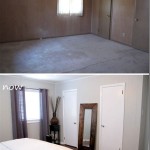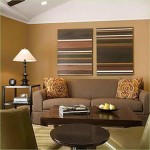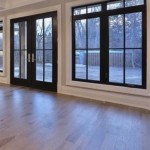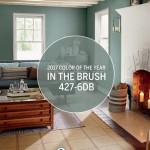Contemporary Interior Design Color Palettes: A Comprehensive Guide
Contemporary interior design, often mistaken for modern design, actually encompasses a fluid and evolving aesthetic, reflective of the present. While modern design, rooted in the early to mid-20th century, emphasizes clean lines and minimalism, contemporary design is more about what's current, absorbing influences from diverse styles and adapting to changing tastes. A pivotal aspect of this evolving aesthetic is the strategic use of color palettes, which dictates the overall mood, feel, and impact of the interior space.
Understanding contemporary color palettes necessitates grasping the core principles that underpin the style. Flexibility and adaptability are key. Trends influencing contemporary palettes draw from various sources: fashion, art, technology, and even global events. The result is a dynamic and ever-changing landscape of color choices that require careful consideration and an awareness of emerging preferences.
This article delves into the nuances of contemporary interior design color palettes, examining key characteristics, popular choices, and the factors that contribute to their enduring relevance. It explores how these palettes are used to create specific atmospheres and enhance the architectural features of a space.
Neutral Foundations: The Backbone of Contemporary Design
Neutral palettes, a cornerstone of contemporary design, provide a versatile backdrop for bolder accents and allow textures and architectural details to take center stage. These palettes typically encompass shades of white, gray, beige, and greige (a blend of gray and beige). Their strength lies in their ability to create a sense of spaciousness, light, and tranquility, essential elements in many contemporary interiors.
Within the neutral spectrum, subtle variations can create distinct atmospheres. For instance, warm neutrals like creamy whites and soft beiges evoke a sense of comfort and relaxation, making them ideal for bedrooms and living areas. Cooler grays, on the other hand, impart a more sophisticated and minimalist feel, often favored in office spaces or modern kitchens. The specific undertones within each neutral color are crucial; paying close attention to whether a gray has a warm (red/yellow) or cool (blue/green) undertone can significantly impact how it interacts with other colors and the overall lighting of the room.
Furthermore, layering different neutral tones adds depth and visual interest. Combining textures such as linen, wool, and concrete within a neutral color scheme prevents the space from feeling flat or monotonous. The addition of metallic accents, such as brushed brass or polished chrome, can also elevate the sophistication of a neutral palette.
The selection of the right neutral paint is paramount. Factors such as the room's natural light, the size of the space, and the existing architectural features should be carefully considered. Testing paint samples on multiple walls and observing them at different times of day is essential to ensure the chosen neutral complements the room's characteristics.
Accent Colors: Injecting Personality and Energy
While neutral palettes provide the foundation, accent colors inject personality and energy into contemporary interiors. These accent colors are typically used sparingly, often in accessories, artwork, and textiles, to create focal points and add visual interest. The choice of accent color depends largely on the desired mood and the overall aesthetic of the space.
Currently, popular accent colors in contemporary design include jewel tones (emerald green, sapphire blue, ruby red), earthy hues (terracotta, ochre, sage green), and muted pastels (dusty rose, lavender, mint green). Jewel tones offer a luxurious and dramatic feel, while earthy hues bring warmth and connection to nature. Muted pastels, on the other hand, create a soft and calming atmosphere. The pairing of these bolder tones against a neutral backdrop allows them to be impactful without overwhelming the space.
The placement of accent colors is equally important. Strategic placement can draw the eye to specific features, such as a piece of art or a sculptural element. For example, a vibrant painting hung on a neutral wall immediately commands attention. Similarly, colorful throw pillows and blankets on a neutral sofa add pops of color and create a more inviting atmosphere. The key is to maintain a balance and avoid overusing accent colors, which can detract from the overall cohesiveness of the design.
Color blocking, a technique that involves using large blocks of contrasting colors, is another way to incorporate accent colors into contemporary interiors. This technique can be used on walls, furniture, or even flooring to create a bold and graphic statement. However, color blocking requires careful planning and an understanding of color theory to ensure the resulting design is visually appealing and harmonious.
Emerging Trends and Future Directions
Contemporary color palettes are constantly evolving, reflecting shifts in societal preferences and technological advancements. Several emerging trends are shaping the future of color in interior design. One notable trend is the increasing emphasis on sustainability and biophilic design, which promote the use of natural materials and colors inspired by the natural world. Earthy tones, greens, and blues are becoming increasingly popular as a way to bring the outdoors in and create a sense of connection to nature.
Another trend is the growing interest in personalized and customized color palettes. Individuals are increasingly seeking to create interiors that reflect their unique personalities and lifestyles. This trend is fueled by the availability of online color tools and resources that allow individuals to experiment with different color combinations and visualize how they will look in their homes. As such, mass-produced palettes are becoming less dominant, with individuals embracing more unique and tailored approaches.
The influence of technology is also shaping contemporary color palettes. Digital art, interactive installations, and smart lighting systems are creating new opportunities to incorporate color into interior spaces in innovative ways. For example, programmable LED lighting can be used to create dynamic color schemes that change based on the time of day or the mood of the occupants. Similarly, digital art can introduce vibrant and ever-changing colors into a space.
Looking ahead, contemporary color palettes are likely to become even more diverse and experimental. The boundaries between traditional color rules and unconventional combinations will continue to blur, as individuals seek to express their creativity and individuality through their interior design choices. The key to success will be to maintain a sense of balance and harmony, ensuring that the chosen colors work together to create a cohesive and visually appealing space. As personal expression becomes increasingly important, expect to see a continued shift away from rigid rules and towards more personalized and dynamic color strategies.
Ultimately, the successful implementation of contemporary interior design color palettes requires a keen eye for detail, a thorough understanding of color theory, and a willingness to experiment and adapt. By carefully considering the principles outlined in this article, designers and homeowners can create interiors that are both stylish and timeless, reflecting the dynamic and ever-evolving nature of contemporary design.

Power Of Color Palettes In Interior Design

20 Best Home Color Palettes House Schemes Offeo

Color Palette For Home 12 Combos Designers Love Havenly Interior Design Blog

How To Choose The Colour Palette For Your Project Alma De Luce

Power Of Color Palettes In Interior Design

Color Palette By Paleutr

Modern Design Style Paint Colors

Color Palette By Paleutr Interior Colorpalette

Ultimate Guide To Modern Interior Design And Academy

Contemporary Interior Room Paint Palette Modern Color Collection Decor For Whole Home
Related Posts








